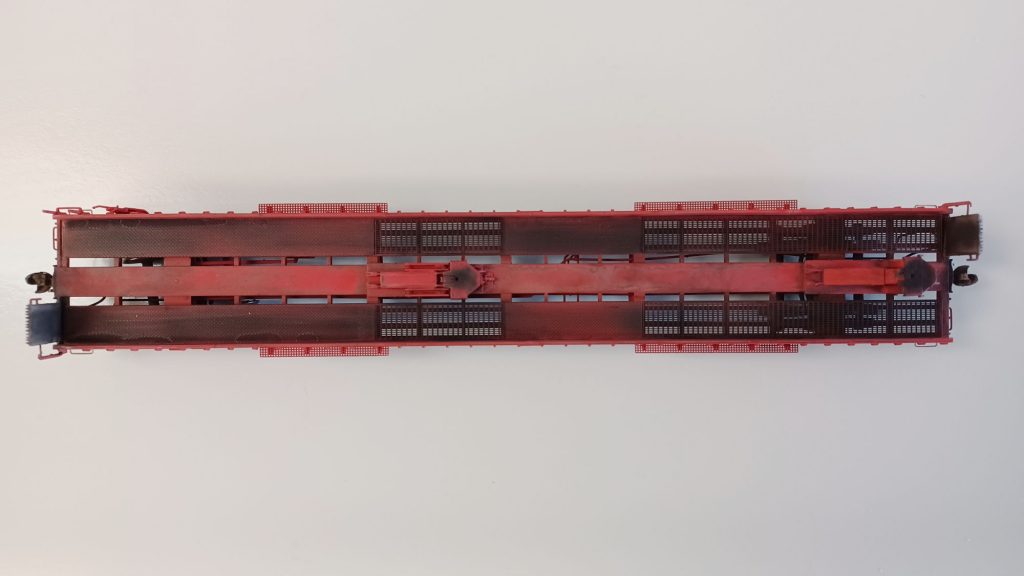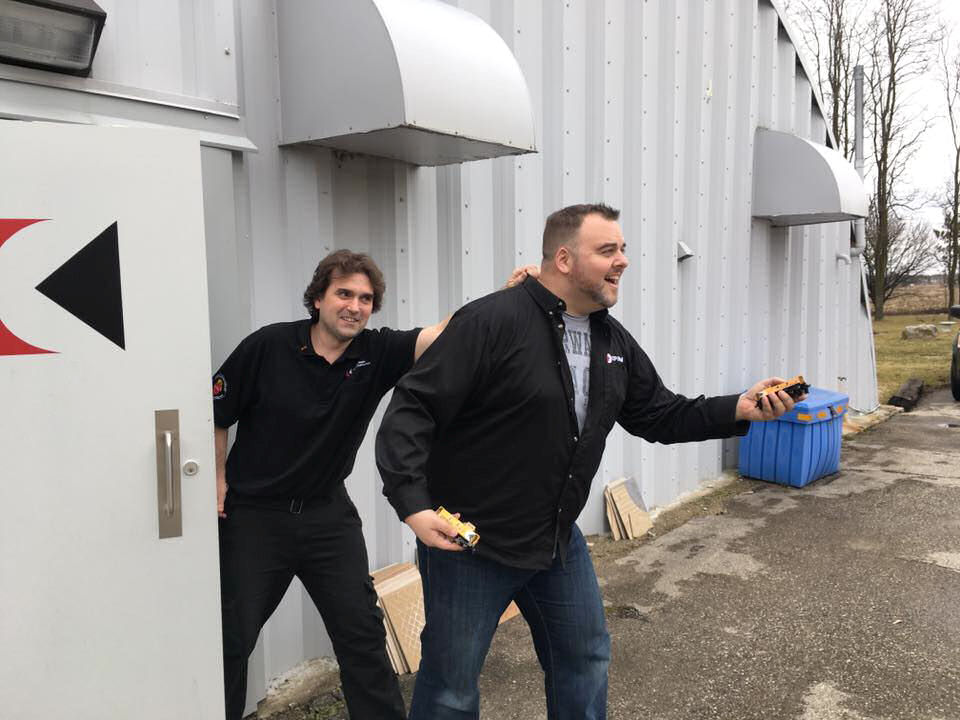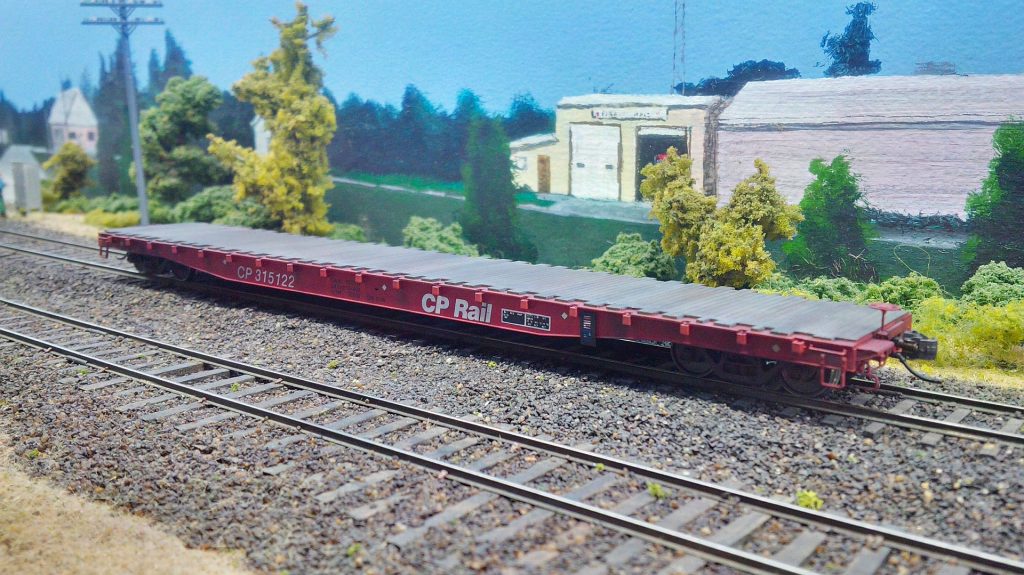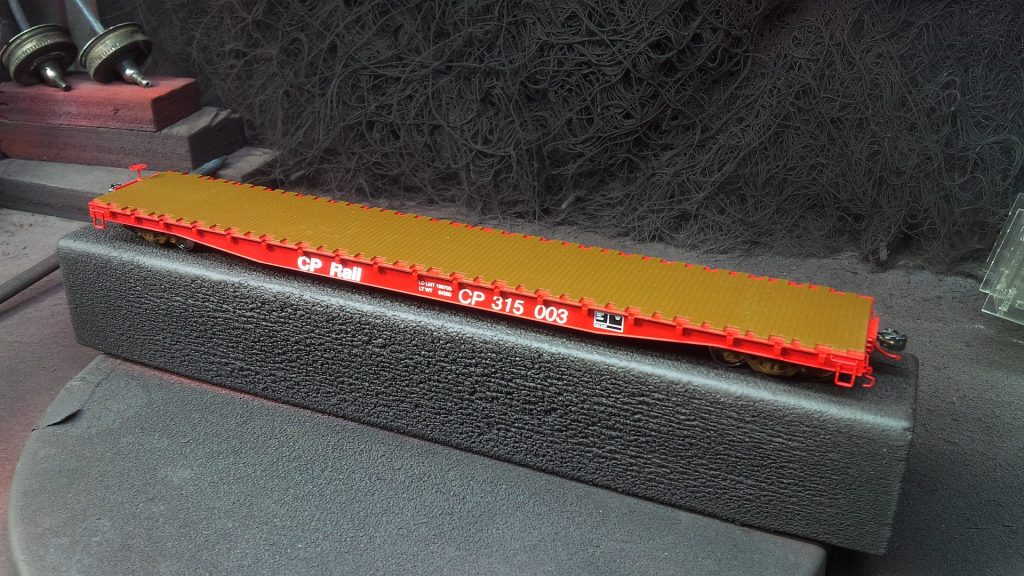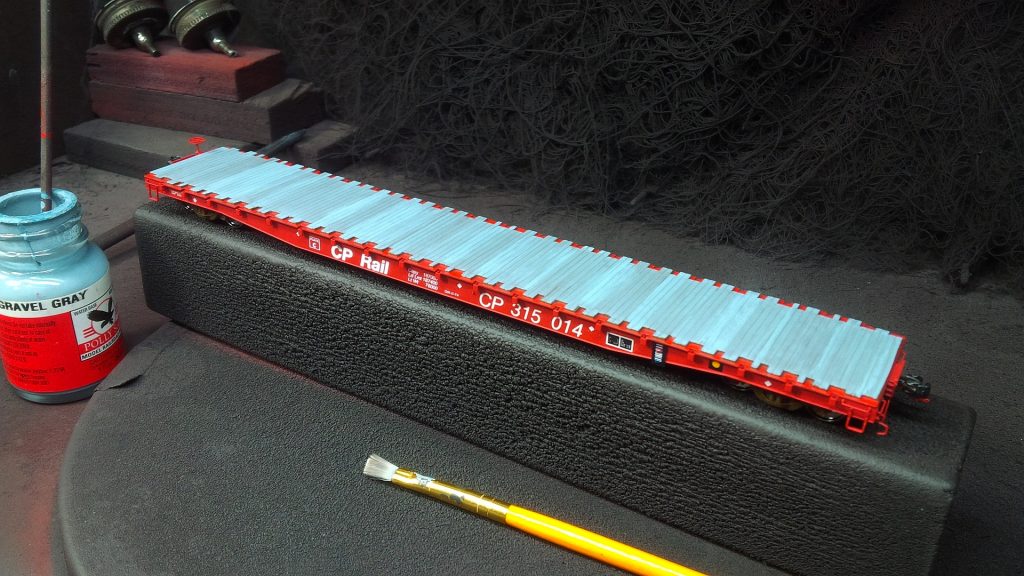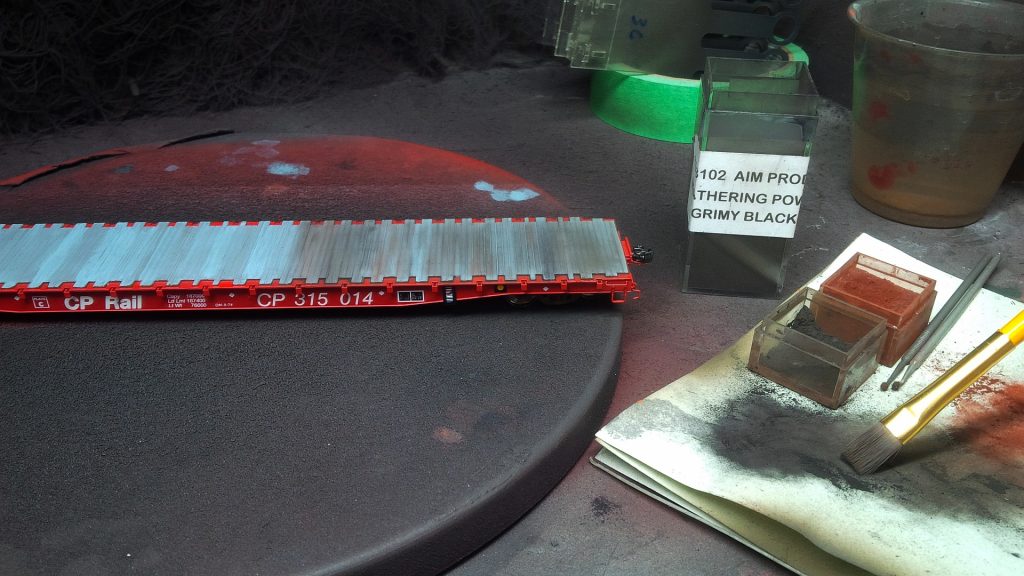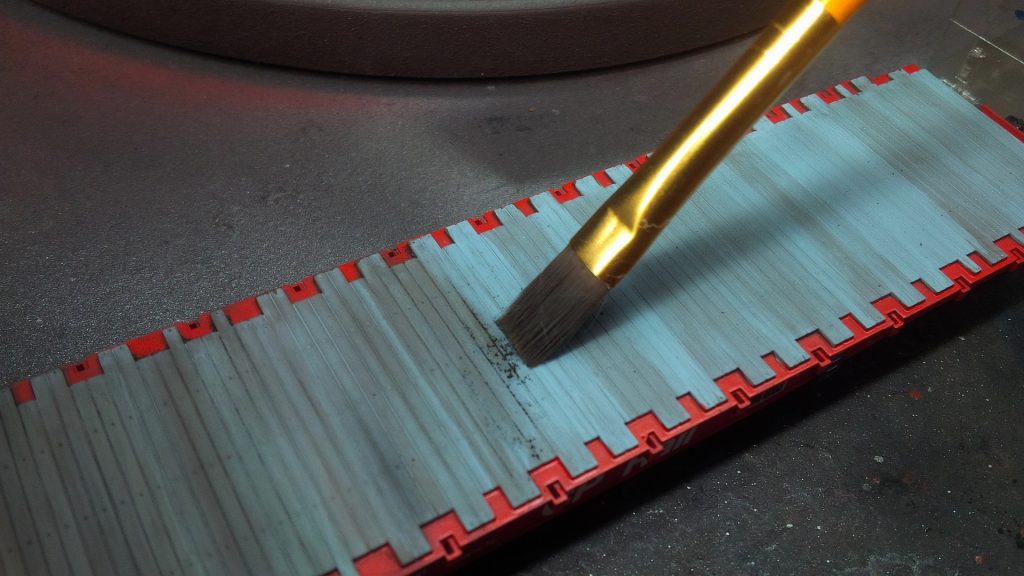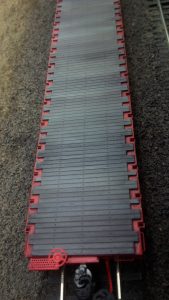An order deadline is coming up soon for some very important models required by Canadian rail-modellers in general, and for us working on the CP Sudbury Division layout specifically. These are for Rapido Trains’ latest announcement of CP and CN specific piggyback flatcars, along with 26ft and 45ft Canadian-built Can-Car and Trailmobile trailers to haul on these flats. Basically, if you are modelling any mainline of either of Canada’s two principle railways between the late 1960s to the early 2000s, you need these models. Or for that matter if you’re a US mainline modeller in that era, you may want to pick up one or two of these piggyback flatcars as well.
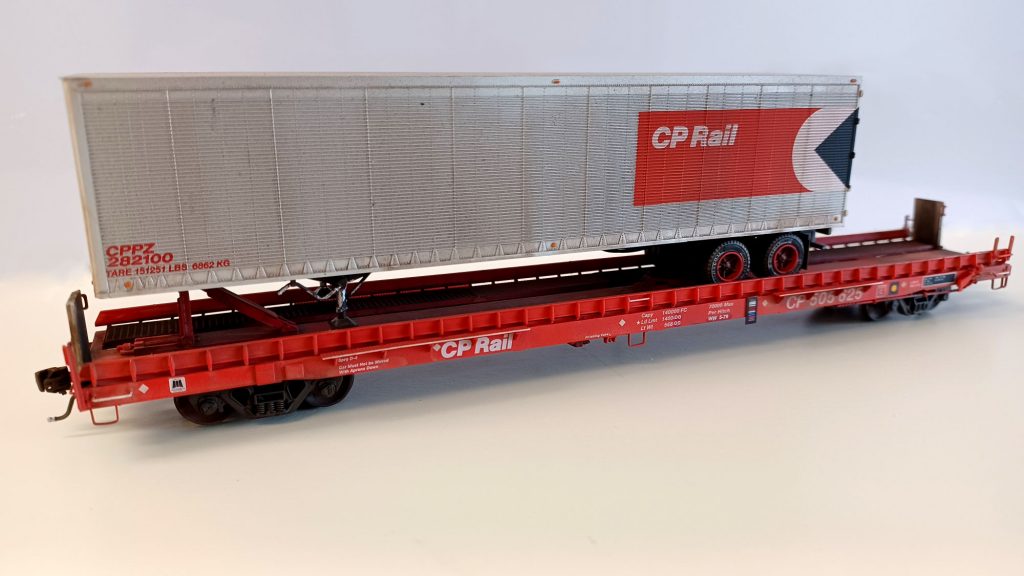
Rapido Trains pre-production samples of the Marine Industries CP 63ft piggyback flat plus 45ft Trailmobile trailer, weathered by Bob Fallowfield.
It seems not a lot has changed in modeller’s perceptions of flatcars since we published these lines in a previous blogpost regarding the Wheels Of Time CP Napanee Flat:
“Flatcars are probably the most under-appreciated pieces of rolling stock in the world of railway modelling. Due to their being, well, ‘flat’, they appear very simple and lack the visual impact of a boxcar or covered hopper. But they are actually among the most specialized cars around, possibly second only to tank cars. This under-appreciation is likely why we still need more flatcar variety in model production.“
Jason Shron has found this out firsthand, as he’s had to relaunch these flats due to much lower than expected sales commitments prior to the initial order deadline. In a recent Rapido newsletter, he reported that hobby shop owners told him many customers had expressed concerns about the prices.
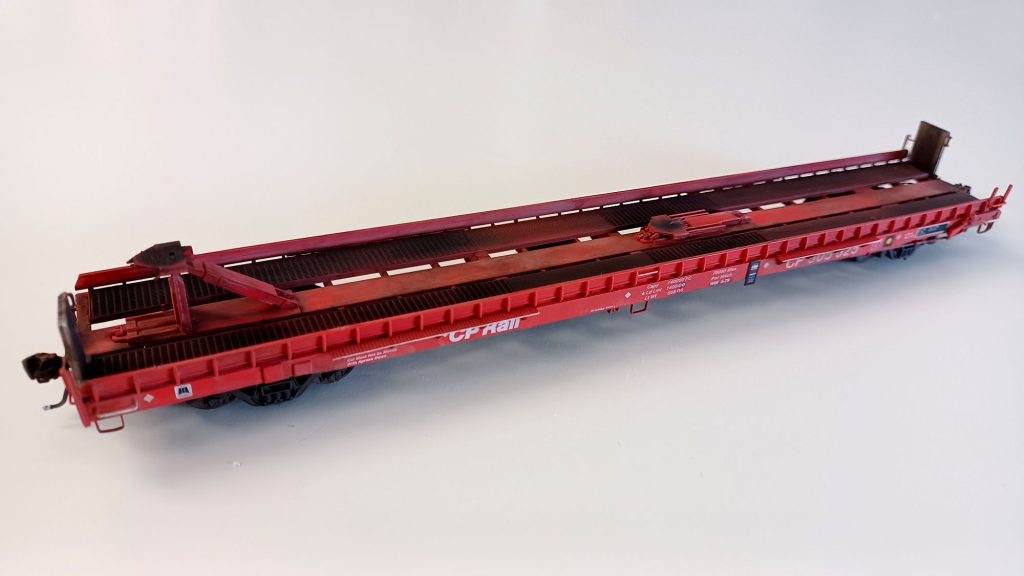
Rapido’s Jason Shron isn’t lying when he says there’s an insane level of detail on these TOFC flatcars. Just click on this photo and look at it.
Sadly, but not surprisingly to us, many hobbyists hold this unfounded perception that because flatcars are smaller than boxcars they should somehow cost less. This thinking is complete and utter rubbish.
The cost of producing these trailer-on-flat-car (TOFC) piggyback flats are actually higher than a standard boxcar. Due to the high level of detail on a smaller footprint, there are higher tooling cost involved, and thus a higher unit cost when compared to a typical boxcar. Adding to this, Rapido’s flatcar body is largely diecast metal with etched-metal grilles. This is much more difficult to work with than plastic.
In our opinion, we are actually getting a break on the pricing since Rapido is trying to hold the cost of these TOFC flatcars in relation to their other recently released freight car models.
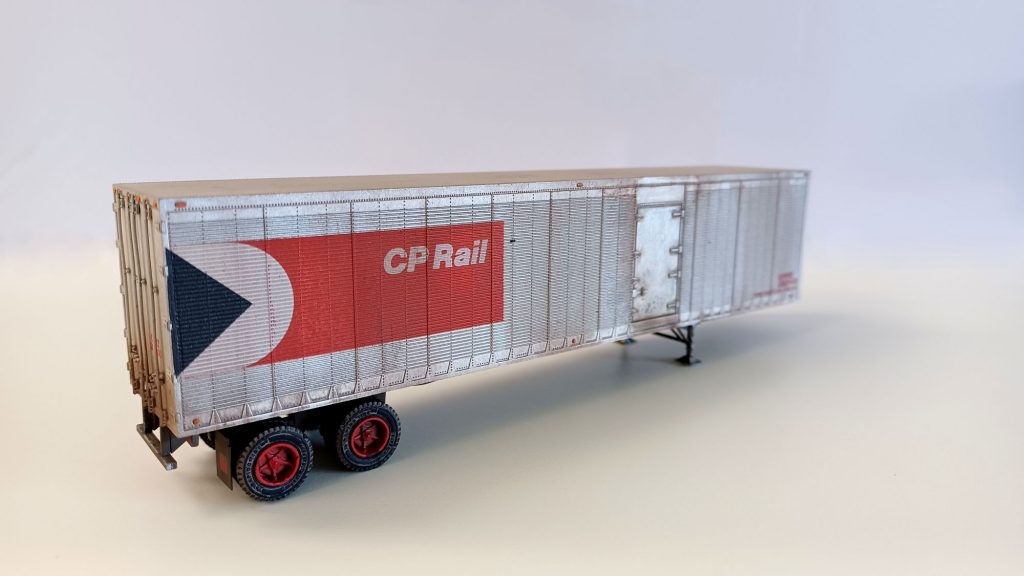
Not just piggyback flats, Rapido’s Canadian dry-van trailers are great models too. This is their 45ft Trailmobile van with side-door in CP Rail colours, weathered by Bob Fallowfield.
So Rapido has attempted to reach out to Canadian modellers on the complexity of these flatcars and trailers, and we at the WRMRC are doing our part. As the Sudbury Division was (and remains) an integral mid-section of the Canadian Pacific transcon route across Canada, we need quite a lot of these TOFC flats. Large blocks of TOFC flatcars would be seen on our priority freights, along with some potentially being hauled on a few manifest trains too.
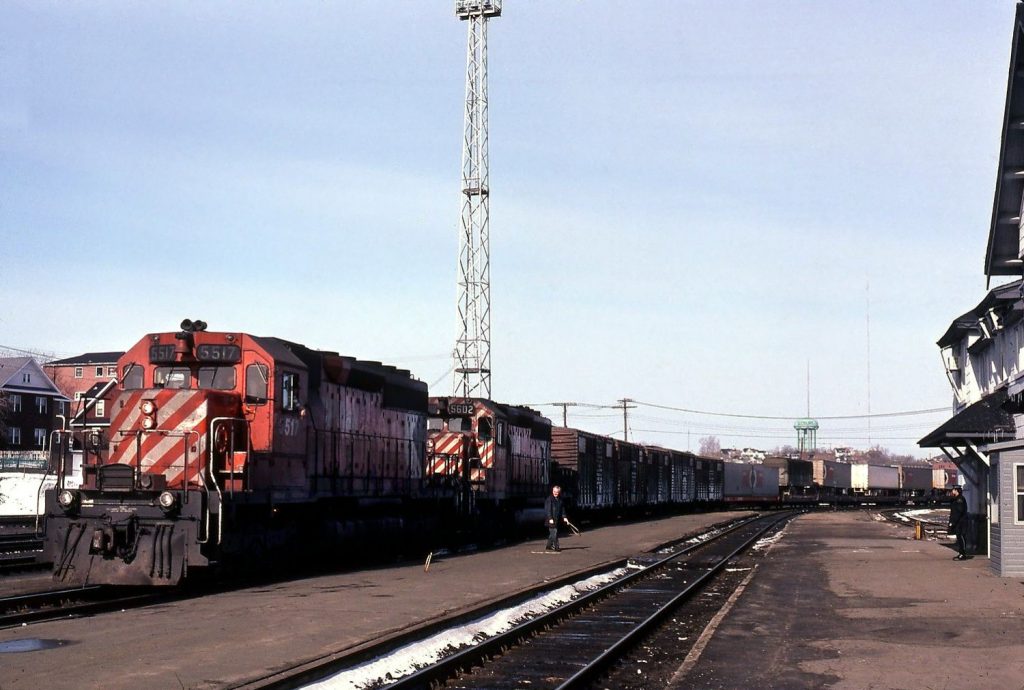
Exhibit ‘A’ in our need for the Rapido TOFC flat. A hot eastbound freight receives train-orders by the Sudbury Division HQ building on 14 March 1981. Behind the stock cars and lone container flat, we see what is surely a long string of CP TOFC flats. (Mike Cleary photo)
The extended deadline for ordering these models is July 17, 2023. You can order these through your favourite hobby shop, or direct from Rapido.
Link for the CP and CN piggyback flatcars is here: https://rapidotrains.com/ho-scale/freight-car/canadian-piggyback-flatcar.html
Can-Car and Trailmobile trailers are here: https://rapidotrains.com/vehicle/can-car-trailmobile-trailers.html
To answer any US modellers who wonder if these Canadian TOFC flatcars ever operated south of the border, that’s a most definite yes. CP Rail cars were naturally operating on the joint CP-SOO intermodal Chicago-Toronto run-throughs that travelled across Michigan, Indiana and Illinois. I also distinctly remember seeing these CP 505xxx-series cars on Conrail ‘TV’ trains back in the day, mixed in sporadically within the large collections and various models of TTX piggyback flats. Additionally Rapido has posted a photo of them operating in California, so they definitely got around.
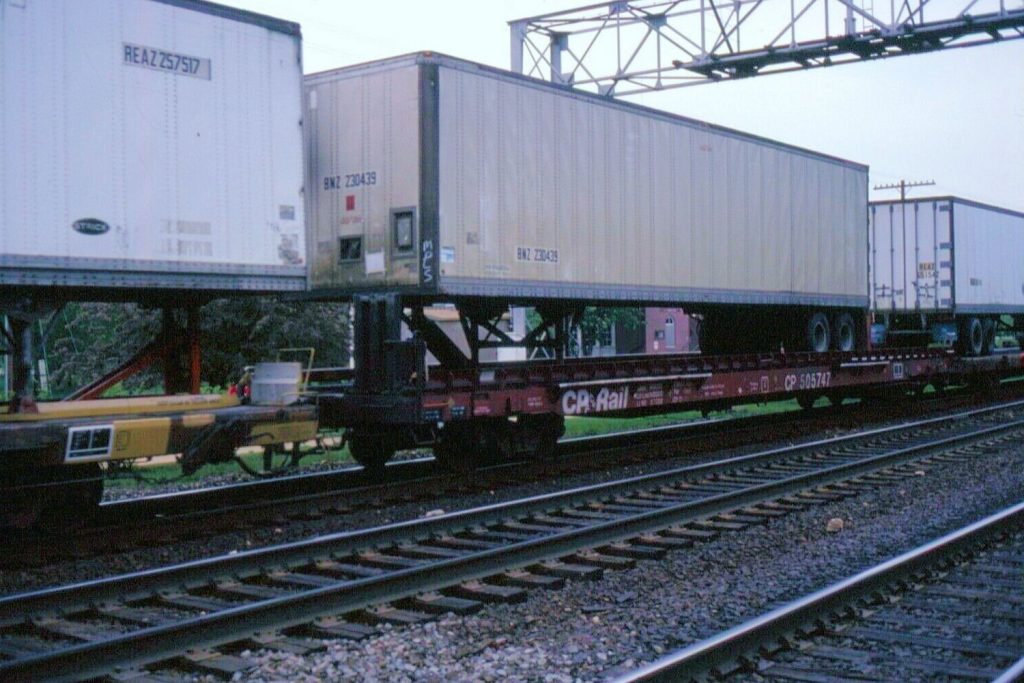
Photo evidence of a CP 505xxx-series piggyback flat operating in the USA. CP 505747 at Hinsdale IL on 20May89. (M.J.Budo photo)
Before closing, we’d like to thank fellow CP Rail aficionado Bob Fallowfield for sharing these Rapido pre-production models with us. This is all a part of our mutual need to see these flats and trailers become a reality. We managed to take a few model shots on our recently sceniced Romford junction section of the layout too.
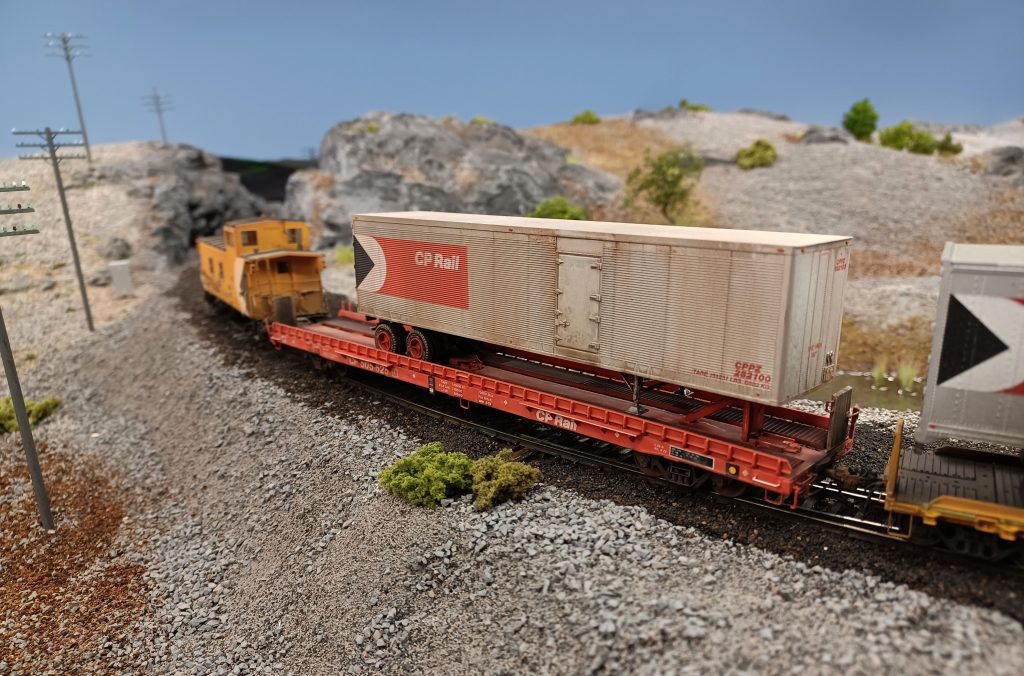
CP 505625 brings up the tail-end of train 965 exiting the Parry Sound Sub at Romford ON on the CP Sudbury Division layout.
To close, here is a promotional video of the Canadian piggyback flatcar and trailer re-launch, in the usual humorous tradition of Rapido Trains.
Don’t feel too bad for Bob here either, he has a history with pilferage of railway property.

